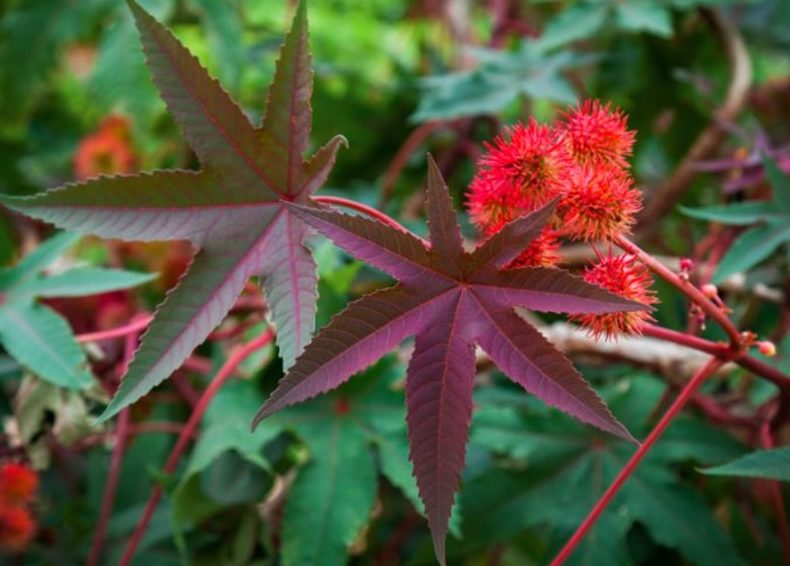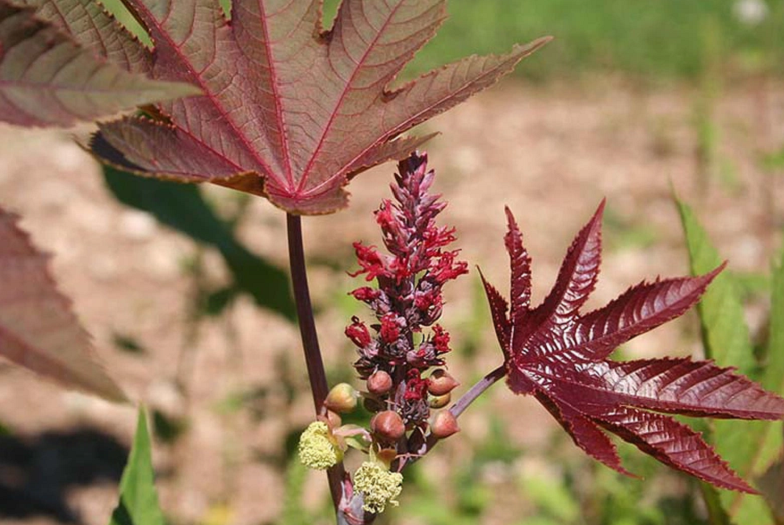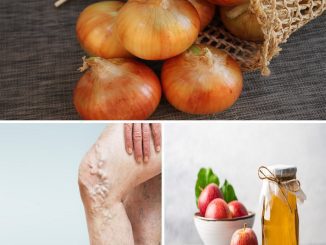When most people hear the word “castor,” they immediately think of castor oil—the thick, nutrient-rich oil that’s been used for generations in traditional beauty and health care. But there’s more to the castor plant than just its oil. Its broad, green leaves—often overlooked—hold a treasure trove of potential benefits that have long been used in natural wellness traditions across the world.

Castor leaves, from the Ricinus communis plant, are packed with compounds that are believed to support the body in many ways. From topical applications to steam inhalation and herbal compresses, these leaves have been incorporated into folk remedies that promote relaxation, comfort, and vitality.
In this guide, we’ll explore 10 popular ways castor leaves are used in holistic wellness practices—and how you can gently bring these ideas into your self-care routine. While these are not substitutes for medical treatment, they can be a thoughtful complement to your natural health habits.
1. A Gentle Approach to Soothing Joint and Muscle Discomfort
One of the most traditional uses of castor leaves is in the support of sore joints or tired muscles. In various cultures, warm castor leaves are gently applied to the skin over stiff areas to create a calming, warming effect.
This practice is rooted in the leaf’s naturally soothing compounds, which are thought to help the body reduce tension and inflammation. For those who experience occasional aches from overexertion or age-related stiffness, this can be a relaxing addition to a nighttime routine.
To try it at home, gently heat a fresh castor leaf until warm (not hot), place it on the affected area, and wrap with a soft cloth. Leave it on for about 20 minutes and rest.

2. Supporting the Body’s Natural Detox Pathways
In traditional herbal practices, castor leaves are considered helpful for supporting the body’s internal cleansing systems—especially the lymphatic system and liver.
When used as warm compresses over the abdominal area, they are believed to stimulate circulation and help the body in its natural detoxification process. While research is ongoing, many wellness enthusiasts use castor leaf packs as part of a gentle cleanse or liver-support routine.
This technique often involves placing a warm castor leaf over the abdomen and relaxing for 30 to 40 minutes. Drinking plenty of water after this practice is also encouraged to aid hydration and toxin elimination.
3. A Soothing Option for Minor Wounds and Irritated Skin
Another traditional use of castor leaves is to support the healing of minor skin issues. Thanks to their naturally antibacterial and antifungal properties, they’ve been used in folk medicine for scrapes, bug bites, and small cuts.
To make a simple poultice, fresh castor leaves are lightly crushed and wrapped in clean gauze before being placed over the affected area. Many people believe this helps keep the area clean and promotes a calm environment for the skin to recover.
It’s important to remember that this should only be used on minor, superficial wounds—not open or infected cuts—and always with clean, safe materials.

4. Comfort During Menstrual Discomfort
For generations, women in parts of Asia and Africa have turned to castor leaf compresses as a way to ease menstrual cramping. When warmed and placed over the lower abdomen, the leaves are believed to help the body relax the muscles and soothe the discomfort naturally.
Some women include this step as part of their self-care ritual during their monthly cycle, finding that the warmth and botanical compounds bring comfort without synthetic options.
Simply warm the leaf slightly, place it over your lower belly, and lie down for 15 to 30 minutes with a soft cloth on top. Breathing deeply during this time can also help relax the body further.
5. A Natural Scalp Rinse to Refresh and Revitalize Hair
While castor oil is famous for hair care, castor leaves also have a long-standing reputation in traditional beauty rituals. When boiled in water, the leaves create a herbal infusion that can be used as a scalp rinse to freshen the skin and reduce flakiness.
This rinse is thought to help stimulate the scalp and promote healthy hair growth over time by improving circulation and delivering botanical nutrients.
To prepare it, boil a handful of fresh castor leaves in water for 10–15 minutes, allow the mixture to cool, strain it, and use it as a final rinse after shampooing.
6. Gentle Support for Breastfeeding Mothers
In some cultural traditions, warm castor leaves are placed over the breasts of nursing mothers to help soothe engorgement or discomfort from blocked milk ducts. While not a substitute for medical advice or lactation consultation, many women find this method calming and supportive during breastfeeding.
As with all natural remedies during pregnancy or breastfeeding, this should only be done with the guidance of a healthcare provider.
7. A Cooling Compress for Swelling and Minor Inflammation
Thanks to their natural cooling effect, castor leaves are often used to calm mild swelling or irritation caused by minor sprains, overuse, or insect bites.
When applied topically, the leaves are believed to offer a refreshing, relaxing sensation to tired or inflamed areas, especially when kept in the refrigerator for a few minutes beforehand.
This method is non-invasive and works best as a part of an overall rest and recovery plan, including hydration and gentle movement.
8. Steam Inhalation for Easier Breathing
Inhaling steam from boiled castor leaves is a traditional practice used in some households to ease occasional respiratory discomfort, especially during cold seasons.
To try this, place a few washed castor leaves in a pot of boiling water, remove from heat, and carefully inhale the rising steam while covering your head with a towel. This can help open the airways and soothe throat or chest irritation.
Always be cautious with steam to avoid burns and never do this with children unless supervised by a healthcare provider.
9. Herbal Support for Skin Wellness
The antimicrobial properties of castor leaves are appreciated in traditional skincare routines. People have used them to help calm conditions like eczema, acne, or ringworm by applying leaf infusions or compresses to the skin.
While more studies are needed, some find that castor leaf preparations help relieve redness and promote smoother, clearer skin over time.
Make sure to do a patch test first, especially if you have sensitive skin or are prone to allergies.
10. Gentle Digestive Aid in Traditional Practices
In folk wellness traditions, a tea made from castor leaves is sometimes consumed in small amounts to promote better digestion and ease bloating. The tea is believed to stimulate the digestive system and encourage smoother elimination.
This use should be approached with caution and never done without proper knowledge. Castor seeds are toxic, and internal use of any part of the plant should be done under professional guidance. External use is considered far safer and more popular.
A Note on Safety and Common Sense
While castor leaves have many interesting uses in natural health circles, it’s essential to remember that the castor plant contains a toxic substance called ricin—primarily found in the seeds. The leaves, when used properly and externally, are generally considered safe, but should never be consumed raw or used in large quantities without expert guidance.
Always consult with a qualified healthcare provider before using castor leaves—especially if you are pregnant, nursing, or dealing with a chronic condition.
Conclusion: Nature’s Quiet Helper in Your Wellness Journey
Castor leaves are one of nature’s lesser-known but surprisingly versatile gifts. From traditional wraps and compresses to steam and rinses, they offer a wide range of wellness possibilities without synthetic chemicals.
Whether you’re interested in easing muscle discomfort, supporting your skin, or enhancing relaxation during your monthly cycle, these leaves can be a meaningful addition to your natural wellness toolkit.
Used with care and respect, castor leaves remind us that sometimes the best support for our well-being comes not from faraway solutions, but from the humble plants that grow close to home.
Would you like a step-by-step guide for making a castor leaf compress or rinse? I’d be happy to help.


